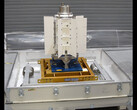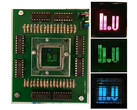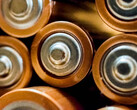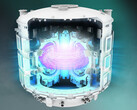The all-important component is the plasma. Hydrogen isotopes must be in this fourth state of aggregation, in which nuclei and electrons are completely separated from each other.
Only then and at temperatures of around 100 million degrees can nuclear fusion be provoked. Helium is created, lighter than its starting materials. The lost mass can be used in the form of energy - a lot of energy.
However, much more of it is needed to achieve this state in the first place. It is even more difficult to keep it upright and stable. In addition, the conditions must be as ideal as possible for the desired fusion.
This is precisely why the Princeton Plasma Physics Laboratory is presenting a new diagnostic instrument, called ALPACA, which can be used to collect data on heated hydrogen.
This should finally make it possible to actually measure the distribution of neutral hydrogen atoms and the charged nuclei and free electrons (i.e. the plasma).
Until now, this distribution, temperature and reactivity could only be estimated and determined using calculations. ALPACA and the second instrument LLAMA, on the other hand, can for the first time "see" exactly how high the concentration of plasma is in certain areas of the reactor using the Lyman alpha line.
This spectral line, which astronomers normally use to search for the origins of the universe, can be observed precisely when the electron begins to detach from the nucleus. The alpha line has a wavelength of 121 nanometers, which is well into the ultraviolet range.
The device is currently being tested and will then be used in the laboratory's tokamak. If it is possible to create the plasma in a more controlled manner and, of course, to stabilize it, the chances of significantly increasing the efficiency and duration of the fusion reactions are good.
Nuclear fusion can still only take place for a few moments because the plasma must not be allowed to leave its containment under any circumstances. Otherwise, it will burn away everything in its path. Being able to control it because you know where there is a lot of hydrogen would therefore be enormously important.
Ultimately, the technology will also be used in ITER in southern France. Only the date for commissioning is still written in the stars. But another of many steps towards this seems to have been taken.


 Deutsch
Deutsch English
English Español
Español Français
Français Italiano
Italiano Nederlands
Nederlands Polski
Polski Português
Português Русский
Русский Türkçe
Türkçe Svenska
Svenska Chinese
Chinese Magyar
Magyar












